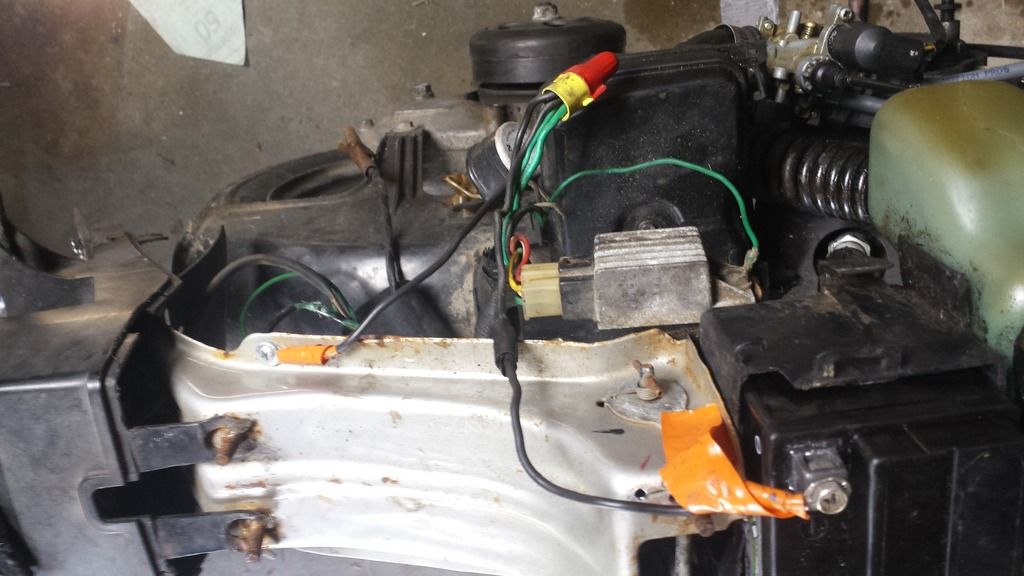Page 1 of 1
Start button
Posted: Thu May 18, 2017 9:15 pm
by thxcuz
Does anyone have a source for a replacement spring for an 86 spree start button. I've flattened 2 of them. No elasticity in them at all.
I tried replacing it with another spring but it won't make contact. Though if I touch the contact with a screwdriver it seems to work.
Re: Start button
Posted: Thu May 18, 2017 9:43 pm
by thxcuz
A quick update. I had a interrupter button from radio shack back when that was still a thing. I hooked it up and everything worked as it should. I pressed the button and the starter turned. This is the first time this has worked correct electrically.
So there's that
Re: Start button
Posted: Fri May 19, 2017 1:20 pm
by thxcuz
Ok. I posted hastily.
My starter motor sometimes spins, sometimes it doesnt.
Battery is fully charged.
Re: Start button
Posted: Fri May 19, 2017 3:06 pm
by thxcuz

This isn't stock, is it
Re: Start button
Posted: Fri May 19, 2017 8:52 pm
by Meatball
Honda didnt use wire nuts or half-azzed electrical tape for connections.....or super glue, or bubble gum. Looks like youve got a mess going.
Re: Start button
Posted: Sat May 20, 2017 8:52 am
by mousewheels
Does anyone have a source for a replacement spring for an 86 spree start button. I've flattened 2 of them. No elasticity in them at all.
That's an unusual failure. There is very little travel on the start button.
-- musings from the armchair --
Hard to troubleshoot from afar, I'm thinking about ways the spring could get flattened.
You scooter wiring looks far from stock.
The spring is in the electrical path when the switch is closed. If the start button got wired to bypass the relay, the spring could get hot and loose it's temper while depressed.
Re: Start button
Posted: Sat May 20, 2017 9:53 am
by thxcuz
That could be it.
Looking at the wire nut, there are 3 green wires 2 thinner than the other. I beleive the thicker wire goes from the starter to the battery and the 2 thin wires are the ground for the rear turn signals. I'll have to figure out where the battery negative goes before it's ground to the chassis.
